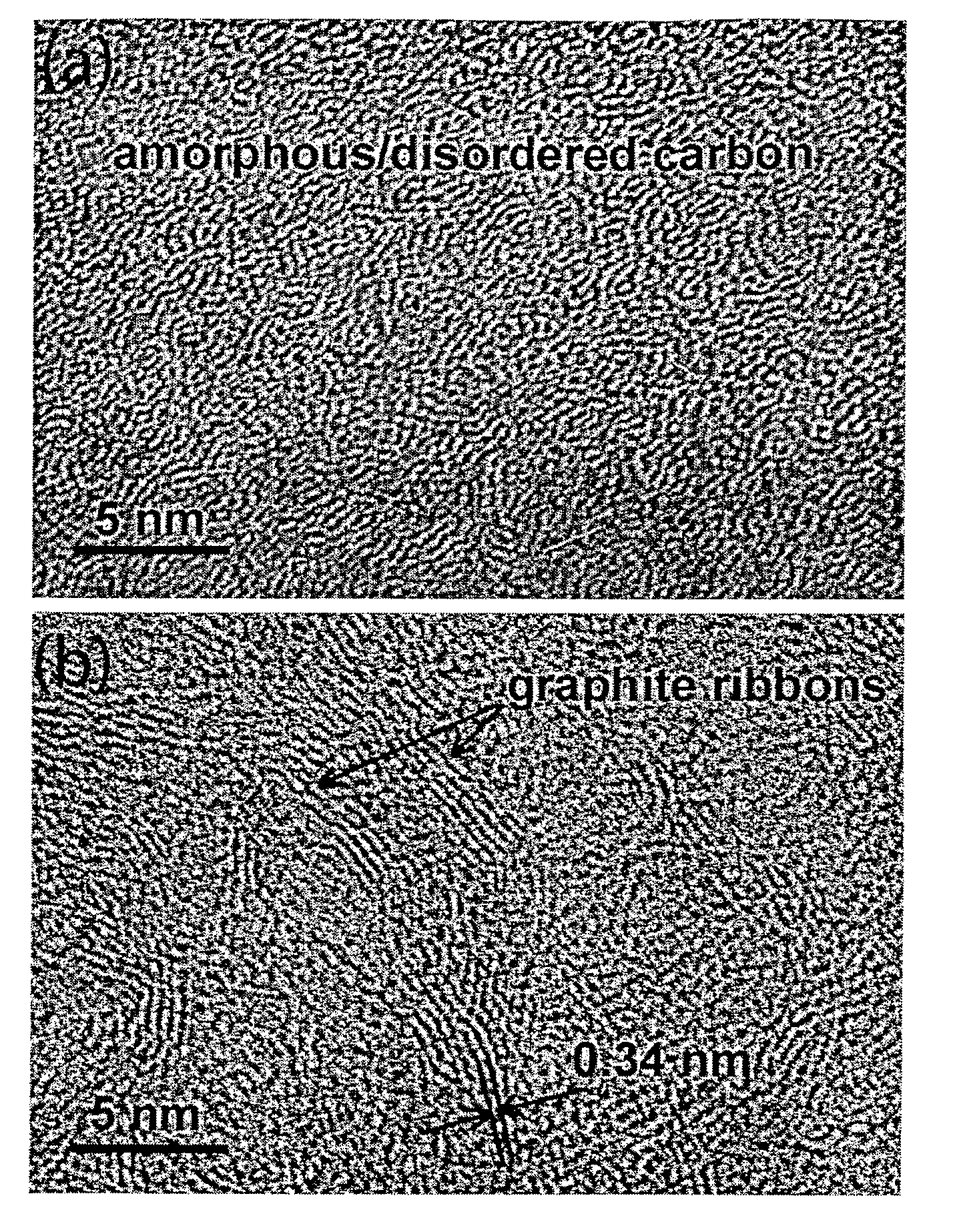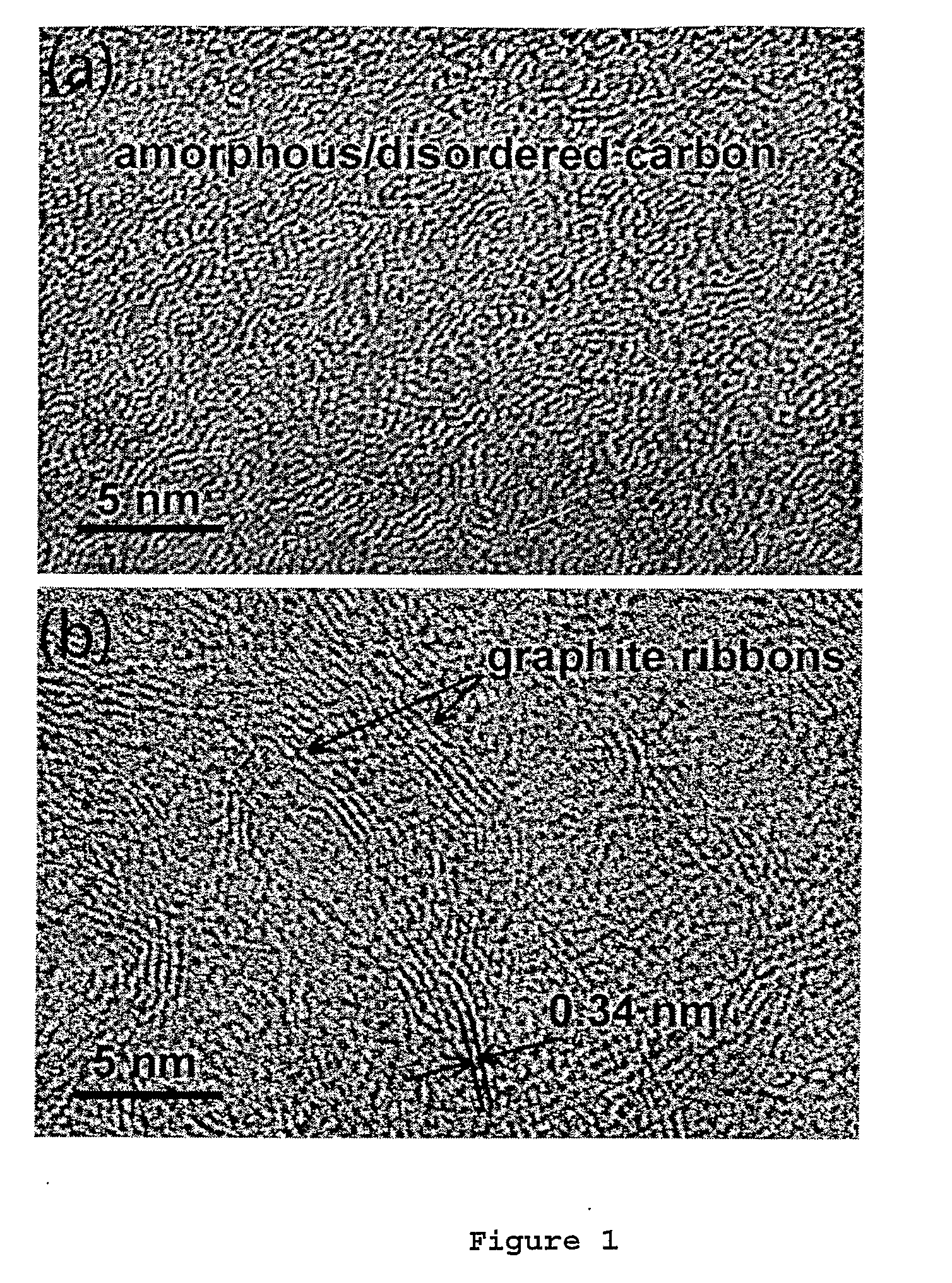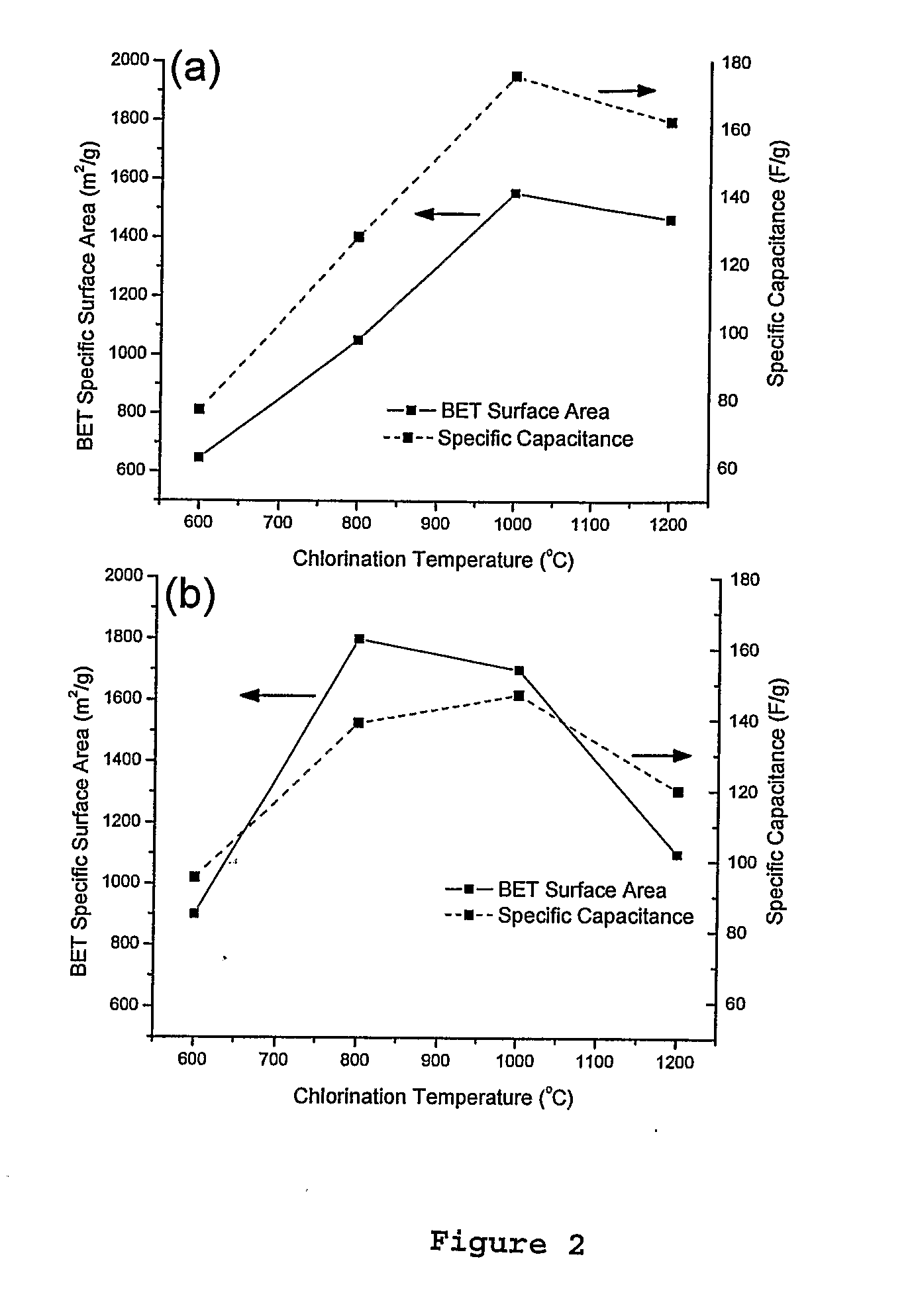Nanocellular high surface area material and methods for use and production thereof
- Summary
- Abstract
- Description
- Claims
- Application Information
AI Technical Summary
Benefits of technology
Problems solved by technology
Method used
Image
Examples
examples
[0036]B4C powder (Alfa Asear, Ward Hill, Mass.) of 2.53 g / cm3 density, 99.4% purity and 6 μm average particle size was chlorinated at 600° C., 800° C., 1000° C., and 1200° C. Bulk Ti2AlC pieces, (3-ONE-2, Voorhees, N.J.) were chlorinated at temperatures of 600° C., 800° C. and 1000° C. These samples were crushed in a mortar (to an average particle size of approximately 12 μm) after chlorination to produce powder. SiC powder with an average particle size of either approximately 30 nm or approximately 800 nm (0.8 μm) was chlorinated at temperatures of 800 and 1000° C. ZrC powder with an average particle size of approximately 8 μm was chlorinated in the 200-1200° C. temperature range. Chlorination was performed in accordance with the technique reported by Nikitin, A. and Gogotsi, Y. (Nanostructured Carbide Derived Carbon (CDC), Encyclopedia of Nanoscience and Nanotechnology, H. S. Nalwa, American Scientific Publishers 7 553 (2003)) and Dash et al. (Microporous and Mesoporous Materials ...
PUM
 Login to View More
Login to View More Abstract
Description
Claims
Application Information
 Login to View More
Login to View More - R&D
- Intellectual Property
- Life Sciences
- Materials
- Tech Scout
- Unparalleled Data Quality
- Higher Quality Content
- 60% Fewer Hallucinations
Browse by: Latest US Patents, China's latest patents, Technical Efficacy Thesaurus, Application Domain, Technology Topic, Popular Technical Reports.
© 2025 PatSnap. All rights reserved.Legal|Privacy policy|Modern Slavery Act Transparency Statement|Sitemap|About US| Contact US: help@patsnap.com



